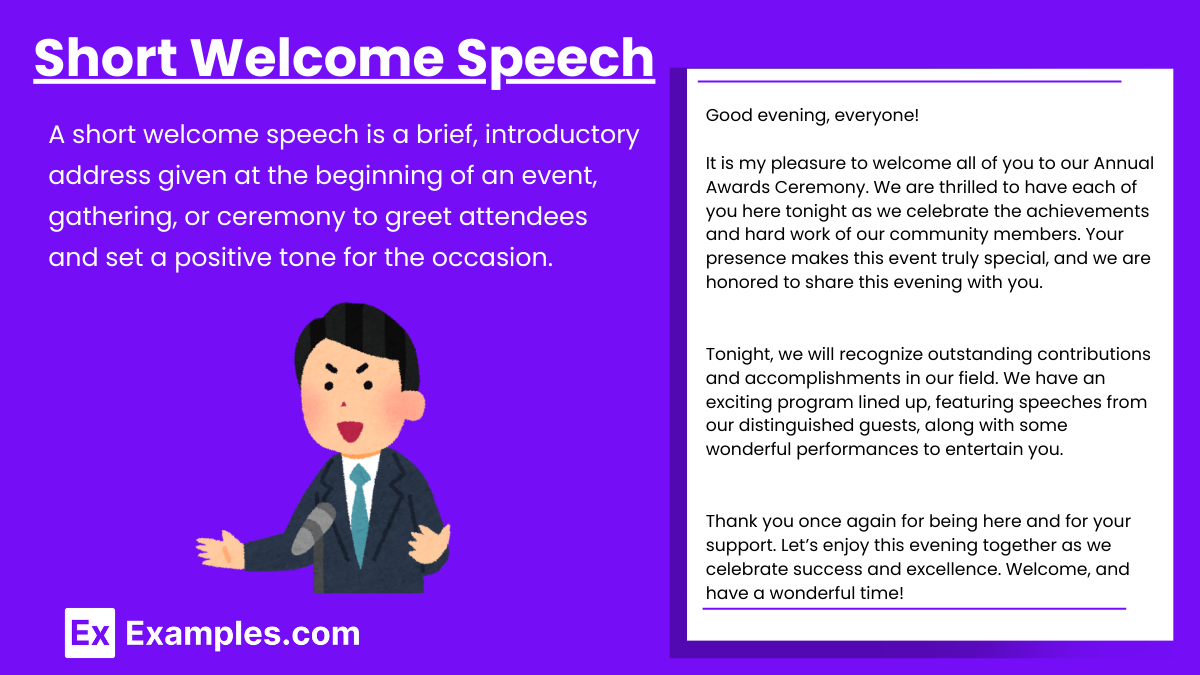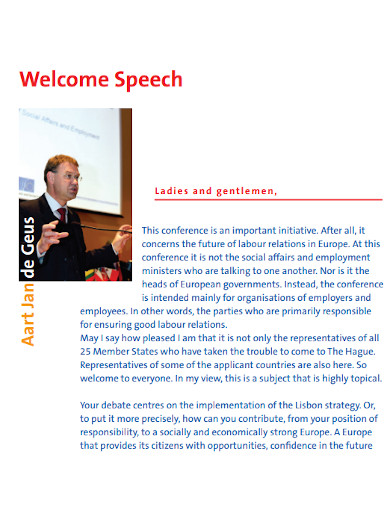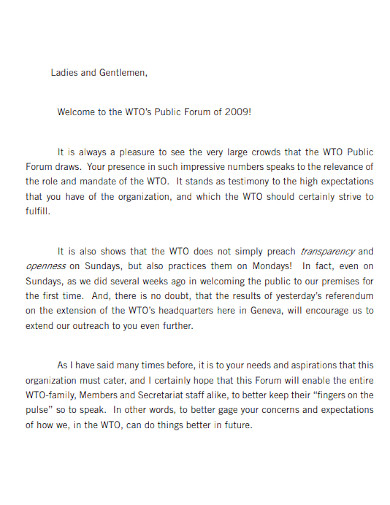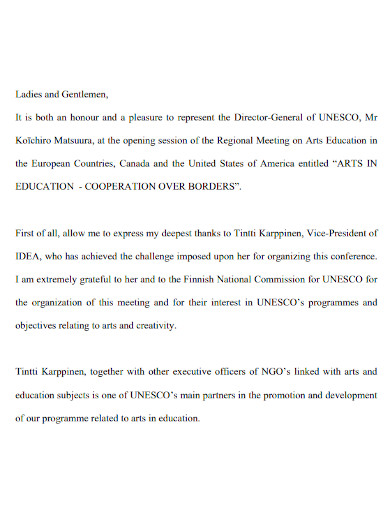10+ Short Welcome Speech Examples to Download
“Greetings and Salutations to each and every one of you. My name is Mr. John Smith and I welcome you all to this amazing event.” Now, did that sound familiar? Making welcome speeches for any type of event whether it is for school activities, welcoming important people or even during an important meeting with new people. Don’t worry, this article is going to help you with making a good short welcome speech for an event, for school or for welcoming a chief guest. You are going to get some examples, basically 10+ examples for short welcome speeches, and some tips on making a good short welcome speech and how to present it.
What is Short Welcome Speech?
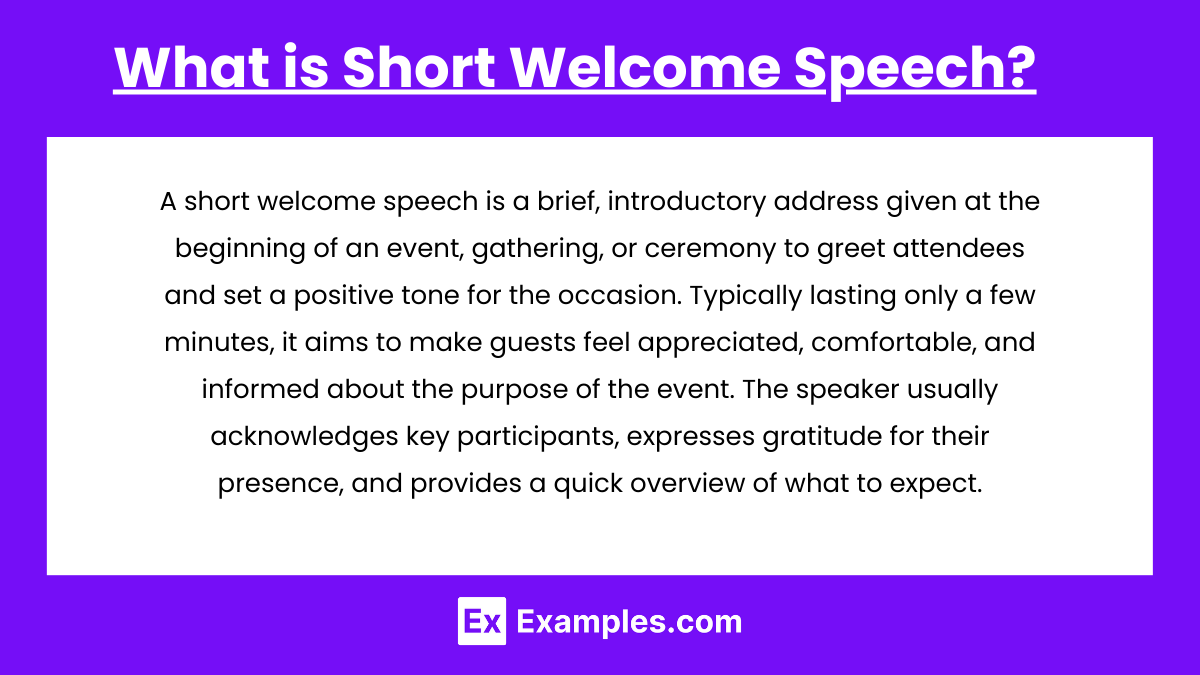
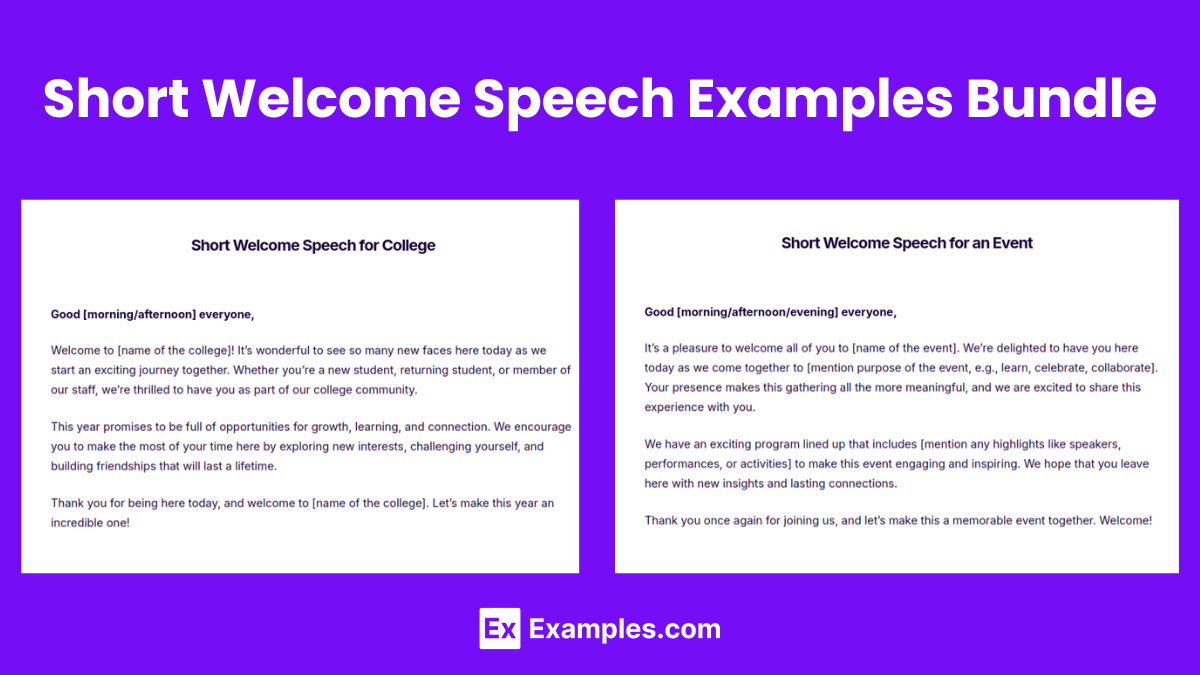
Download Short Welcome Speech Examples Bundle
Short Welcome Speech Format
Greeting
- Begin with a warm greeting to your audience.
- Example: “Good morning, everyone!” or “Hello and welcome, everyone!”
Acknowledgment of Guests
- Recognize special guests, dignitaries, or the audience as a whole.
- Example: “I would like to extend a warm welcome to our honored guests, [mention names or titles if appropriate], and to everyone joining us today.”
Introduction to the Event
- Briefly introduce the event or occasion and its purpose.
- Example: “We are gathered here today to celebrate [mention occasion or purpose], and to [mention any specific goals of the event].”
Express Gratitude
- Thank the attendees for coming and express appreciation for their presence.
- Example: “Thank you all for being here and taking the time to join us on this special occasion.”
Highlight Key Parts of the Event
- Give a brief overview of what’s planned or what the audience can expect.
- Example: “We have a wonderful lineup of speakers/performances/activities today that will [mention purpose, like educate, entertain, inspire].”
Concluding Remarks
- Wrap up with a closing remark, such as a wish for everyone to enjoy the event.
- Example: “Once again, thank you for joining us. Let’s make this a memorable day together!”
Short Welcome Speech Example
Good evening, everyone!
It is my pleasure to welcome all of you to our Annual Awards Ceremony. We are thrilled to have each of you here tonight as we celebrate the achievements and hard work of our community members. Your presence makes this event truly special, and we are honored to share this evening with you.
Tonight, we will recognize outstanding contributions and accomplishments in our field. We have an exciting program lined up, featuring speeches from our distinguished guests, along with some wonderful performances to entertain you.
Thank you once again for being here and for your support. Let’s enjoy this evening together as we celebrate success and excellence. Welcome, and have a wonderful time!
Short Welcome Speech for an Event
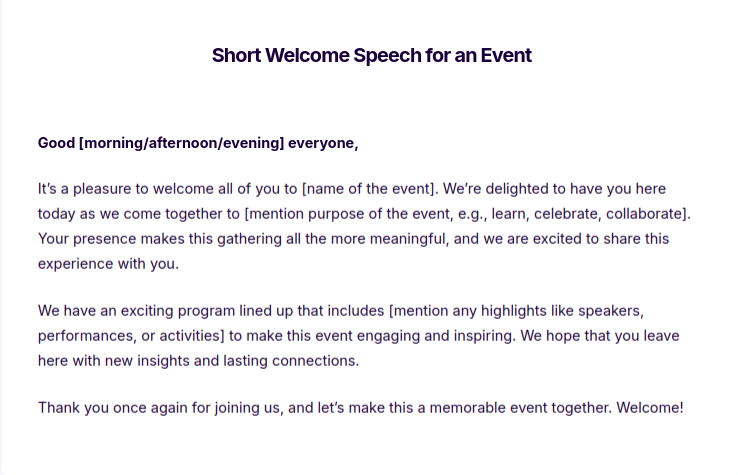
Short Welcome Speech for College
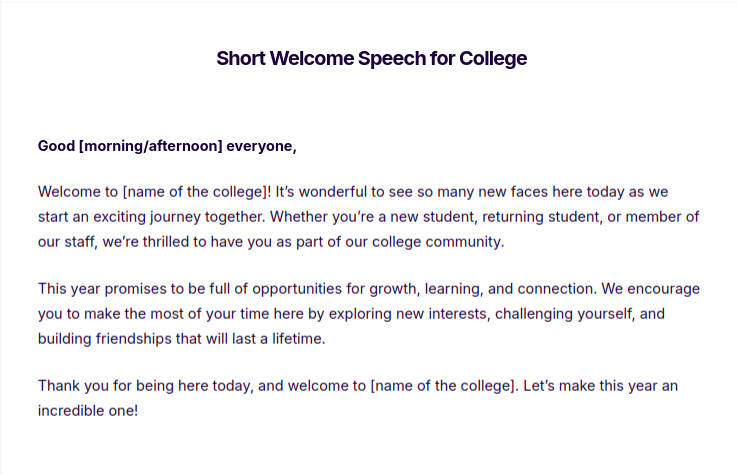
Short Welcome Speech for Birthday Party
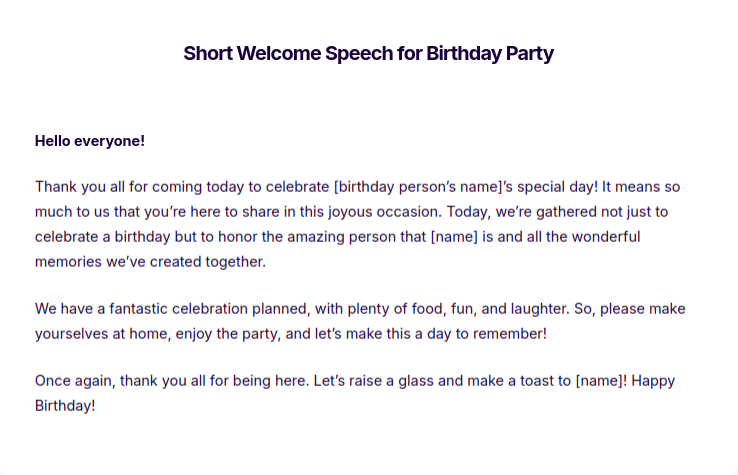
More Short Welcome Speech Examples and Samples
- Short welcome speech for church
- Short welcome speech for a meeting
- Short welcome speech for guest
- Short welcome speech for farewell
- Short welcome speech for conference
- Short Welcome speech for Students
- Short welcome speech for retirement party
Short Welcome Speech Example
Short Welcome Directors Speech
Short Welcome Education Speech
How to Write a Short Welcome Speeches
Writing a short welcome speech involves focusing on a few key elements to make it engaging, clear, and effective. Here’s a step-by-step guide to help you craft a memorable welcome speech:
-
Start with a Friendly Greeting
Begin by warmly greeting the audience.
Example: “Good morning everyone!” or “Hello and welcome!” -
Introduce Yourself (If Necessary)
If you’re not well-known to the audience, briefly introduce yourself and your role.
Example: “My name is [Your Name], and I’m honored to be here today as [Your Position].” -
Acknowledge the Occasion
Mention the event or purpose for which everyone has gathered.
Example: “Today, we are gathered to celebrate [mention the occasion or purpose].” -
Express Gratitude for Attendance
Thank the audience for taking the time to be present.
Example: “Thank you all for being here to share this special occasion with us.” -
Mention Key Highlights or Agenda
Provide a brief overview of what attendees can expect.
Example: “We have an exciting program lined up, featuring [mention speakers, activities, or sessions].” -
Include a Personal Touch
If possible, add a short, relatable remark to make the speech more personal.
Example: “It’s wonderful to see so many familiar faces and new ones, too.” -
Conclude with a Welcoming Note
End by formally welcoming everyone to the event and expressing hope that they enjoy the day.
Example: “Once again, welcome to [event name]. Let’s make this a memorable day together!”
Importance of a Short Welcome Speech
A short welcome speech holds significant value in setting the tone for any event or gathering. Here are some key reasons why it is important:
- Creates a Warm and Inclusive Atmosphere : A short welcome speech helps guests feel acknowledged and appreciated. It sets a friendly and inviting tone, making everyone feel comfortable and valued from the beginning.
- Provides Clarity and Purpose : By briefly explaining the purpose of the event, a welcome speech ensures everyone understands why they are gathered and what to expect. This helps to focus the audience’s attention and align their expectations.
- Introduces Key Highlights : A concise welcome speech can highlight the main features of the event, such as speakers, activities, or goals, which engages the audience’s interest and excitement about what’s ahead.
- Shows Appreciation for Attendance : Recognizing the presence of the guests, especially in a personal way, expresses gratitude and respect. This strengthens the connection between the host and the audience, contributing to a positive experience.
- Establishes a Professional and Organized Start : A short, well-delivered welcome speech conveys professionalism and helps to kick off the event in an organized manner. It signals that the event has been thoughtfully planned and is ready to begin.
FAQ’s
How long should a short welcome speech be?
A short welcome speech typically lasts between 1 to 3 minutes. It should be concise enough to capture the audience’s attention without delaying the main agenda of the event.
What should be included in a short welcome speech?
A short welcome speech should include a greeting, a brief mention of the occasion, gratitude for attendance, key highlights or agenda of the event, and a welcoming closing statement.
How can I make my welcome speech engaging?
To make your speech engaging, use a warm and friendly tone, keep your language simple and direct, and include a personal touch, like a quick story or relatable comment about the event or the audience.
Is it necessary to mention specific people in a welcome speech?
While it’s not always necessary, mentioning specific people, such as honored guests, event organizers, or sponsors, can add a respectful touch to the speech and acknowledge their contributions.
Can I use humor in a short welcome speech?
Yes, humor can be a great way to connect with the audience, as long as it’s appropriate for the occasion and audience. A light-hearted comment or a friendly joke can help create a relaxed atmosphere.


